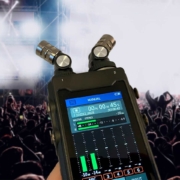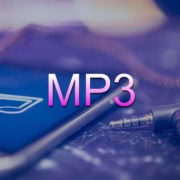How ‘WICKED’ Recorded its Musical Singing Numbers Live | Behind the Scenes
Wicked’s film adaptation, which was released on November 27, 2024 (for the USA), transports audiences to the Land of Oz with its dazzling visuals and, crucially, its iconic musical numbers. One of the most talked-about aspects of its production has been the commitment to capturing the actors’ vocals live on set, as opposed to performing to a prerecorded track played through speakers.
Indeed, this ambitious approach, while incredibly challenging, often yields a more authentic and emotionally resonant performance. However, how exactly did director Jon M. Chu and his team pull off this feat, especially with the complexities of a large-scale musical?
We wanted to uncover their methods for such an amazing accomplishment. Let’s explore the groundbreaking techniques behind live audio capture, particularly within a production as grand as Wicked.
The Art of On-Set Vocals: Crafting Authentic Sound
Recording live vocals on a film set isn’t just about singing; it’s a precise orchestration of performance, technical skill, and environmental mastery. It demands a unique blend of artistry and technical prowess, far exceeding the controlled environment of a traditional recording studio. While a studio offers isolation and acoustic treatment, a film set vibrates with the constant hum of crew members and the whirring of equipment.
Who recorded the audio on set for Wicked?
In this challenging environment, Simon Hayes, the production sound mixer behind “Wicked,” pioneered a groundbreaking technique for the film’s audio: live vocal capture. Leveraging his Oscar-winning background, Hayes made sure every vocal nuance, from Cynthia Erivo’s robust power to Ariana Grande’s intricate harmonies, was authentically recorded as it happened on set. This audacious commitment to real-time performance, though undoubtedly challenging, directly pulls viewers into the raw emotion and musical genius of “Wicked.”
To ensure the pristine quality of Cynthia Erivo’s and Ariana Grande’s live vocal recordings, a deliberate choice was made: no music filled the set. Instead, both performers received their precisely-cued music mixes directly through in-ear monitors (“earwigs”), allowing for perfectly isolated and immaculate vocal capture.
Techniques Used to Capture Live Audio:
- In-ear monitors (or “earwigs”): Because music couldn’t be played through speakers during filming, in-ear monitors were essential for delivering audio directly to performers. The crew wore headphones during the recording. This ensured the sound stage remained clear of any music or guide tracks.
- Wireless Lavaliers (Hidden Microphones): These tiny microphones, often clipped discreetly to costumes or hidden in wigs, are the backbone of live vocal capture on film sets. For Wicked, custom-rigged lavaliers were probably used for each principal performer. The key is ensuring they pick up clear vocals without rustling from clothing or extraneous set noise.
- Boom Microphones: While lavaliers capture individual voices, boom microphones (long poles with microphones attached) are crucial for capturing wider soundscapes, group vocals, and providing a more natural ambient sound. Experienced boom operators would have meticulously followed the actors, ensuring the microphone was always just out of frame, pointing directly at the sound source.
- Utilizing Rugs and Panels: Simon Hayes used rugs on the floor. He did this for two reasons: to reduce the sound of footsteps and to stop sound reflections. This measure was taken specifically when a wide shot was not being filmed.
- Loud Machinery Located Outside: Wind generators, such as those used for Cynthia’s scenes, were positioned outside the sound stage. Special effects crew members managed plastic tubes through which air was silently directed onto the set.
Example of Utilizing Wireless Lavaliers

The latest lavalier microphones are incredibly small, offering unparalleled discretion. To take advantage of this, Simon Hayes leveraged this by concealing a microphone on the brim of Cynthia’s hat. The result? The mic was unseen, yet perfectly positioned for maximum vocal clarity.
When Cynthia and Ariana performed their heartfelt solo, a live keyboard was wired directly into the Pro Tools system, feeding it to their in-ear monitors. This crucial connection consequently ensured the performers could hear the live music and stay perfectly in sync as the keyboard was played in real time.
Managing Wind and Interference: Battling the Elements
Filming outdoors, as Wicked undeniably did for crucial sequences, instantly introduced a formidable adversary: the relentless, unpredictable force of wind, a constant threat to pristine audio capture. Wind can create undesirable low-frequency rumble and distortion in microphones.
- Wind Shields and Blimps: Microphones, especially boom mics, would have been encased in specialized wind shields (often furry covers called “dead cats” or “dead wombat”) and “blimps” – cages designed to protect the microphone from wind noise while still allowing sound to pass through.
- Proximity to the Performer: Keeping microphones as close as possible to the performer’s mouth helps to increase the signal-to-noise ratio, meaning the voice is louder relative to any ambient wind noise.
- Careful Scheduling: Production teams often try to schedule outdoor musical numbers during periods of calmer weather to minimize wind interference.
Audio Post-Production: The Maestros Behind the Mix
While the live capture is crucial, the magic truly comes together in audio post-production. The raw audio tracks, recorded on set, undergo meticulous refinement and blending. It’s common for three or four microphones to be used for each performer, providing a rich foundation for this detailed work.
In this phase, the role of a Re-recording Mixer is paramount in such a large-scale musical. These highly skilled audio engineers are responsible for balancing all the elements of the soundtrack – dialogue, music, sound effects, and ADR (Automated Dialogue Replacement, if used) – to create a cohesive and immersive sonic experience.
Andy Nelson and John Marquis were at the helm of the re-recording mix, meticulously blending the music, dialogue, and sound effects. Guiding the entire soundscape was supervising sound editor Nancy Nugent Title, while Greg Wells shaped the musical direction as the producer.
Audio Software Used to Mix ‘Wicked’
The software used to mix the film Wicked was professional-grade Digital Audio Workstations (DAWs) capable of handling massive track counts and complex automation. The industry standard for film post-production audio includes:
- Avid Pro Tools: Wicked’s audio team mixed live and studio recordings. This intricate process relied heavily on the industry-standard digital audio workstation Pro Tools to achieve its complex sonic tapestry.
- Dolby Atmos: The sound team harnessed the power of Dolby Atmos, delivering a truly enveloping audio experience for theatergoers. Audio was meticulously routed and panned using Pro Tools in conjunction with the Dolby Atmos Renderer to create the intricate immersive mix.
The DAW is then augmented by a vast array of high-quality plugins for equalization (EQ), compression, reverb, delay, and other effects, allowing the mixers to sculpt the sound to perfection.
The commitment to live vocal capture in Wicked speaks volumes about the creative team’s dedication to delivering an authentic and powerful cinematic experience. By combining meticulous on-set techniques with the unparalleled expertise of post-production audio professionals, Wicked is poised to be not only a visual spectacle but also an auditory masterpiece.













